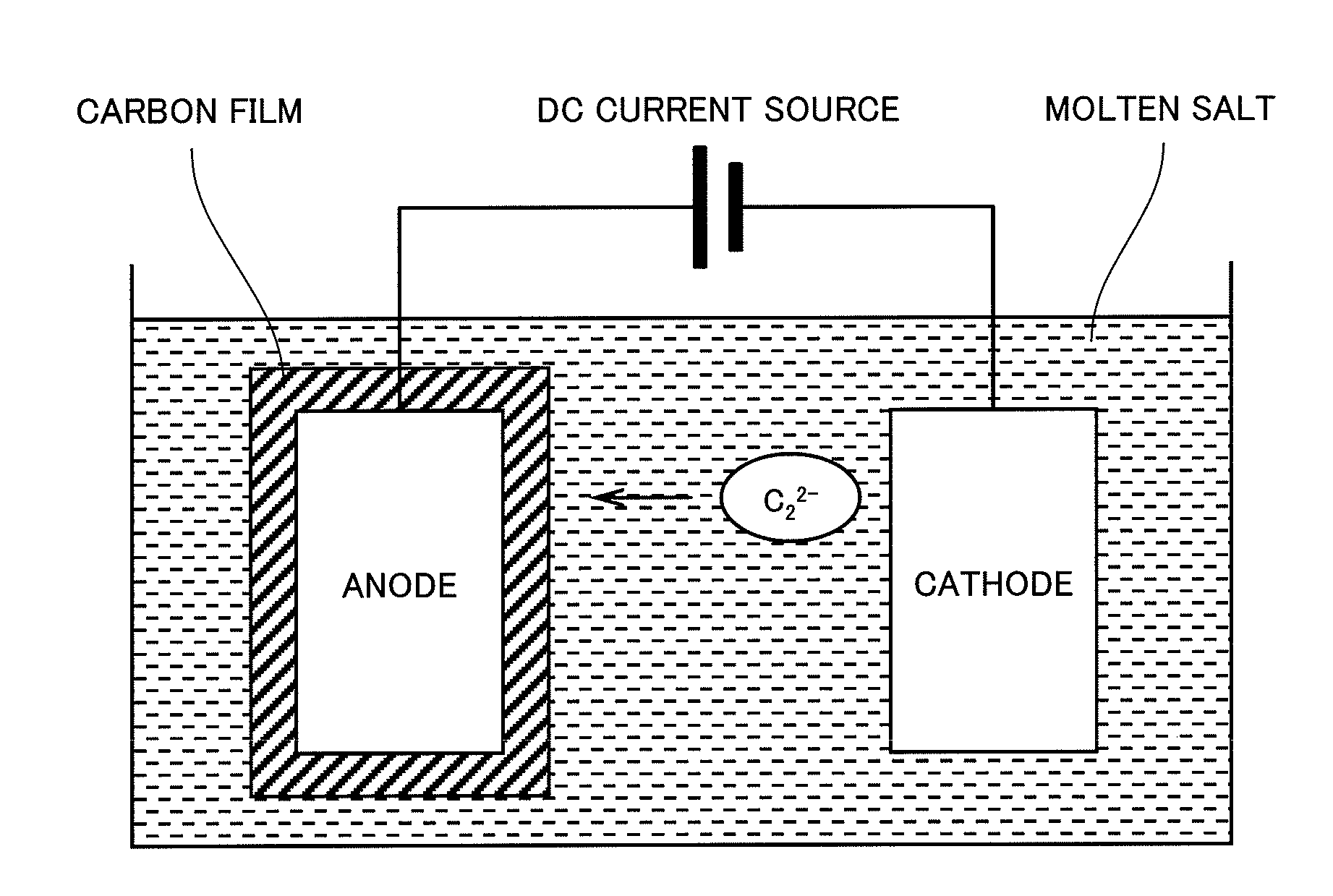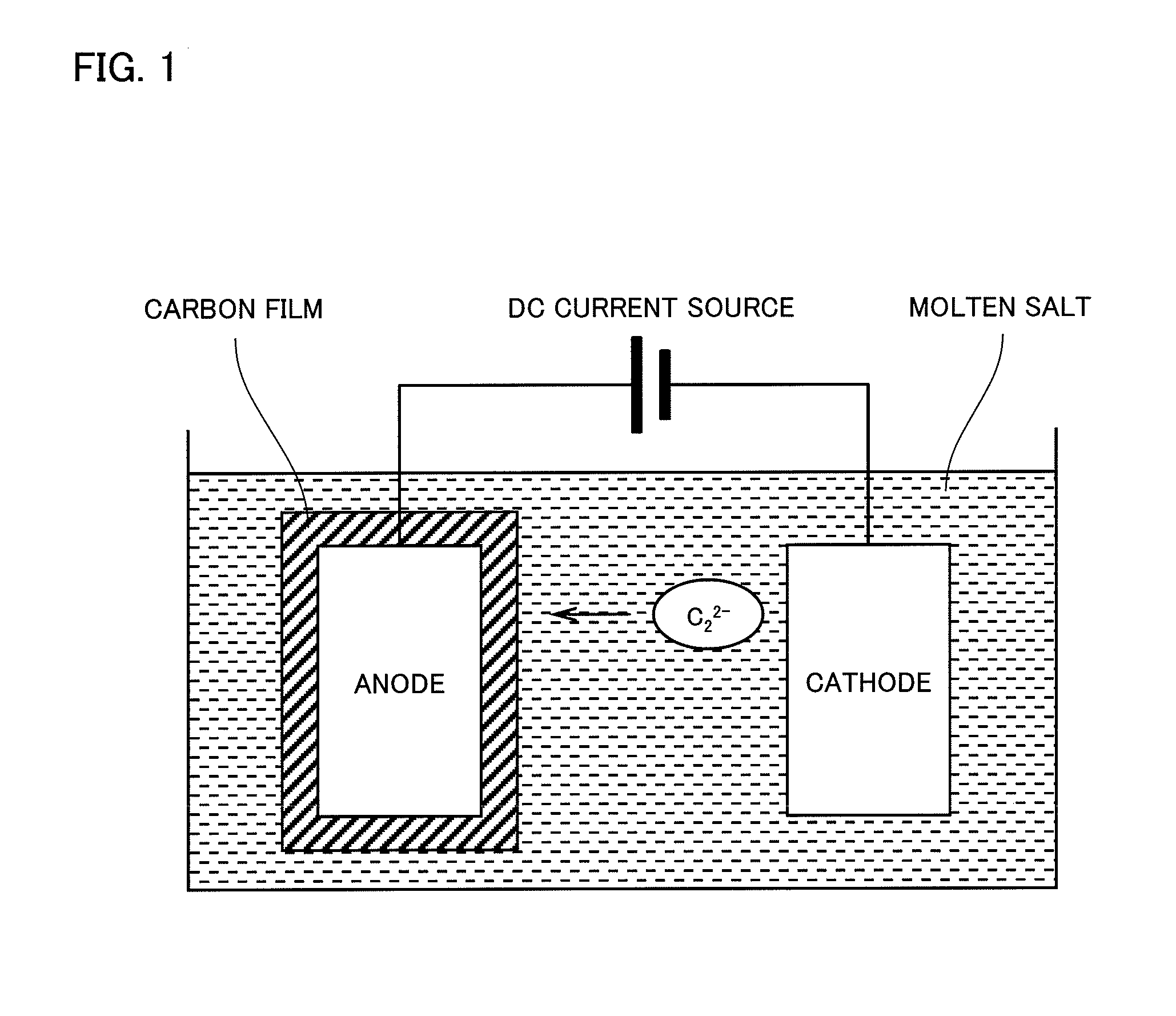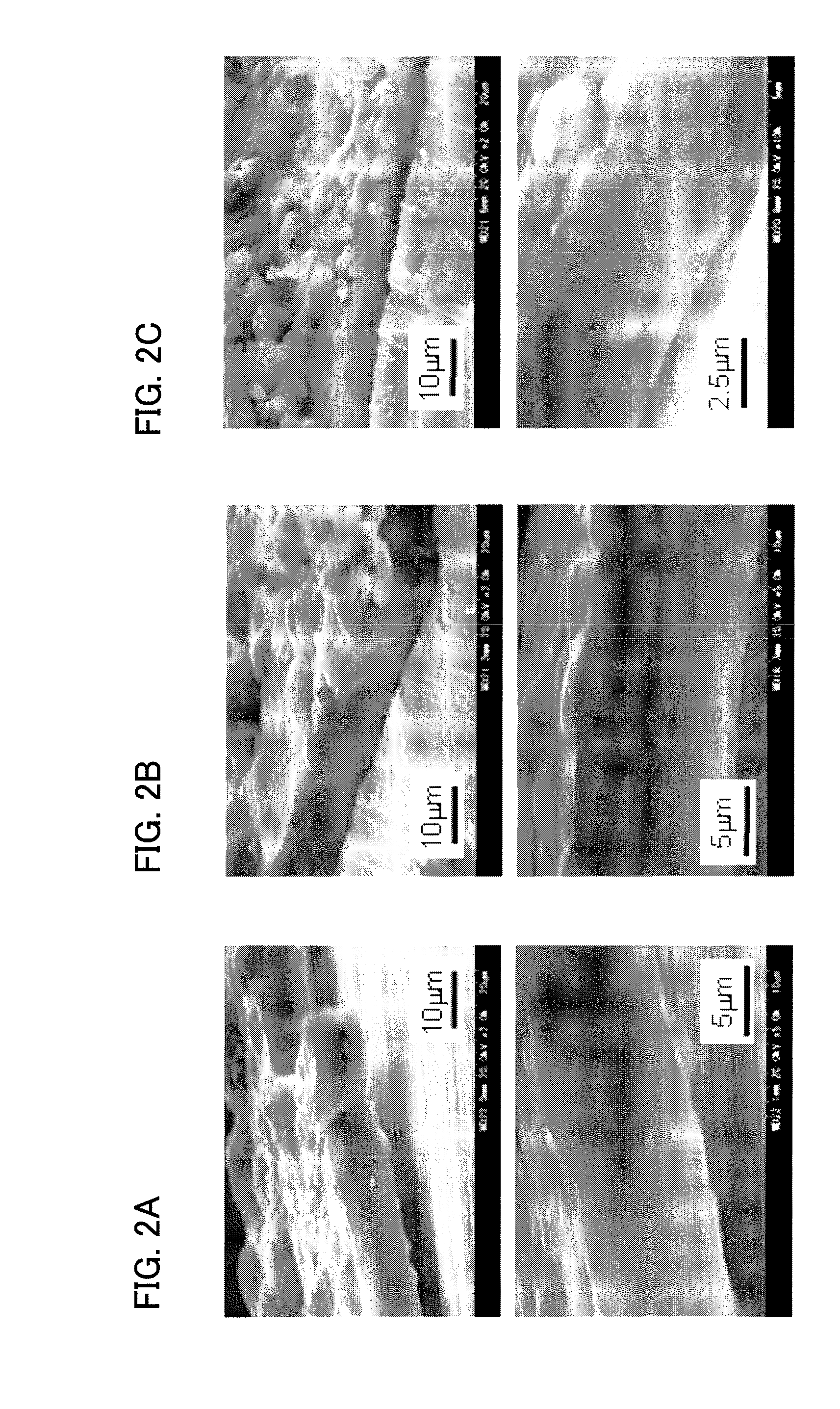Method for electrochemically depositing carbon film on a substrate
a technology of carbon film and electrochemical deposit, which is applied in the direction of electrolysis inorganic material coating, etc., to achieve the effect of simple apparatus and simple manner
- Summary
- Abstract
- Description
- Claims
- Application Information
AI Technical Summary
Benefits of technology
Problems solved by technology
Method used
Image
Examples
example 1
[0034]Using the apparatus as schematically shown in FIG. 1, a carbon coating film was deposited on the substrate in the molten salt bath containing 3 mol % of calcium carbide dissolved therein at 500° C. at a constant potential of 1.5 V (vs. Li+ / Li). DC current was applied until a quantity of electricity reached 40 C / cm2.
[0035]X-ray diffraction analysis revealed that the carbon film consisted mainly of amorphous carbon including graphite-like carbon. In another test, the carbon film was forced to be broken down by folding the carbon film together with the metal substrate outwardly. Then the exposed broken section was examined by the scanning electron microscopy. As shown in FIG. 2A, the deposited carbon film was very dense as observed in the broken section.
example 2
[0036]Example 1 was repeated except that lithium nitride Li3N was added to the molten salt bath at a concentration of 0.5 mol %. The deposited carbon film was broken down as in Example 1 and the broken section was examined by the scanning electron microscopy. As shown in FIG. 2B, the deposited carbon film was very dense as observed in the broken section and remained adhered integrally with the substrate.
example 3
[0037]Example 1 was repeated except that lithium nitride Li3N was added to the molten salt bath at a concentration of 1.5 mol %. The deposited carbon film was broken down as in Example 1 and the broken section was examined by the scanning electron microscopy. As shown in FIG. 2C, the deposited carbon film was very dense as observed in the broken section and remained adhered integrally with the substrate. This demonstrates that the addition of lithium nitride improves the quality of the carbon film by the addition of lithium nitride at least up to 1.5 mol %.
PUM
| Property | Measurement | Unit |
|---|---|---|
| mol % | aaaaa | aaaaa |
| mol % | aaaaa | aaaaa |
| temperature | aaaaa | aaaaa |
Abstract
Description
Claims
Application Information
 Login to View More
Login to View More - R&D
- Intellectual Property
- Life Sciences
- Materials
- Tech Scout
- Unparalleled Data Quality
- Higher Quality Content
- 60% Fewer Hallucinations
Browse by: Latest US Patents, China's latest patents, Technical Efficacy Thesaurus, Application Domain, Technology Topic, Popular Technical Reports.
© 2025 PatSnap. All rights reserved.Legal|Privacy policy|Modern Slavery Act Transparency Statement|Sitemap|About US| Contact US: help@patsnap.com



